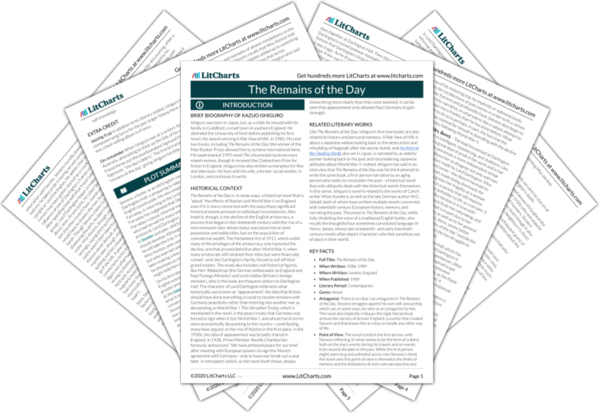Next
Summary
The Remains of the Day Study Guide |
Next
Summary
|
Welcome to the LitCharts study guide on Kazuo Ishiguro's The Remains of the Day. Created by the original team behind SparkNotes, LitCharts are the world's best literature guides.

Jazzing it up In addition to his literary output, Ishiguro has also composed song lyrics for the jazz singer Stacey Kent; their CD was a best-selling album in France.
On remainder When Ishiguro was at a writers’ festival in Australia, attempting to think up the title of his next novel, his friend threw out the psychoanalyst Sigmund Freud’s concept of Tagesreste, “the day’s debris.” The friend translated it as “remains of the day,” giving Ishiguro his title.